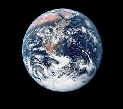www.aljazeerah.info
Opinion Editorials, July 2019
Archives
Mission & Name
Conflict Terminology
Editorials
Gaza Holocaust
Gulf War
Isdood
Islam
News
News Photos
Opinion Editorials
US Foreign Policy (Dr. El-Najjar's Articles)
www.aljazeerah.info
Public Banking Is the Way to Pay for the Progressive Democratic Agenda in the US, Just Like China and Japan Have Been Doing By Ellen Brown Al-Jazeerah, CCUN, July 22, 2019 |
 |
 |
|
How to Pay for It All: An Option the Candidates Missed
The Democratic Party has clearly swung to the progressive
left, with candidates in the first round of presidential debates coming
up with one program after another to help the poor, the disadvantaged
and the struggling middle class. Proposals ranged from a Universal Basic
Income to Medicare for All to a Green New Deal to student debt
forgiveness and free college tuition. The problem, as
Stuart Varney observed on FOX Business, was that no one had
a viable way to pay for it all without raising taxes or taking
from other programs, a hard sell to voters. If robbing Peter to pay Paul
is the only alternative, the proposals will go the way of Trump’s
trillion dollar infrastructure bill for lack of funding.
Fortunately there is another alternative, one that no one seems to be
talking about – at least no one on the presidential candidates’ stage.
In Japan, it is a hot topic; and in China, it is evidently taken for
granted: the government can generate the money it needs simply
by creating it on the books of its own banks.
Leaders in China and Japan recognize that
stimulating the economy is not a zero-sum game in which funds are just
shuffled from one pot to another. To grow the economy and increase GDP,
demand (money) must go up along with supply. New money needs to be added
to the system; and that is what China and Japan have
been doing, very successfully.
Before the 2008-09 global
banking crisis, China’s GDP increased by an average of 10% per year for
30 years. The money supply increased right along with it, created on the
books of its state-owned banks. Japan under Prime Minister Shinzo Abe
has been following suit, with massive economic stimulus funded by
correspondingly massive purchases of the government’s debt by its
central bank, using money simply created with computer keystrokes.
All of this has occurred without driving up prices, the dire result
predicted by US economists who subscribe to classical monetarist theory.
In the 20 years from 1998 to 2018, China’s M2 money supply grew from
just over 10 trillion yuan to 180 trillion yuan ($11.6T), an 18-fold
increase. Yet it closed 2018 with a consumer inflation rate that was
under 2%.
Price stability has been maintained because China’s Gross Domestic
Product has grown at
nearly the same fast clip, by a factor of 13 over 20 years.
In
Japan, the massive stimulus programs called “Abenomics” have been funded
through its central bank. The Bank of Japan
has now “monetized” nearly 50% of the government’s debt, turning it
into new money by purchasing it with yen created on the bank’s books. If
the US Fed did that, it would own $11 trillion in US government bonds,
four times what it holds now. Yet
Japan’s M2
money supply has not even doubled in 20 years, while the US money
supply has grown by
300%; and Japan’s inflation rate remains stubbornly below the BOJ’s
2% target. Abe’s stimulus programs have not driven up prices. In fact
deflation remains a greater concern than inflation in Japan, despite
unprecedented debt monetization by its central bank.
China’s Economy: A Giant Ponzi Scheme or a New Economic Model?
Critics have long
called China’s economy a Ponzi scheme, doomed to collapse in the
end; and for 40 years China has continued to prove the critics wrong.
According to a June
2019 report by the Congressional Research Service:
Since
opening up to foreign trade and investment and implementing free-market
reforms in 1979, China has been among the world’s fastest-growing
economies, with real annual gross domestic product (GDP) growth
averaging 9.5% through 2018, a pace described by the World Bank as “the
fastest sustained expansion by a major economy in history.” Such growth
has enabled China, on average, to double its GDP every eight years and
helped raise an estimated 800 million people out of poverty. China has
become the world’s largest economy (on a purchasing power parity basis),
manufacturer, merchandise trader, and holder of foreign exchange
reserves.
This massive growth has been funded with credit
created on the books of China’s banks, most of which are state-owned.
Even in the US, course, most money today is created on the books of
banks. That is
what our money supply is – bank credit. What is different about the
Chinese model is that the Chinese government can and does intervene to
direct where the credit goes. In a July 2018 article titled “China
Invents a Different Way to Run an Economy,” Noah Smith suggests that
China’s novel approach to macroeconomic stabilization by regulating bank
credit represents a new economic model, one that may hold valuable
lessons for developed economies. He writes:
Many economists
would see this approach as hopelessly ad hoc, haphazard, and
interventionist — not the kind of thing any developed country would want
to rely on. And yet, it seems to have carried China successfully through
several crises, while always averting the catastrophic financial crash
that outside observers have been warning about for years.
Abenomics, Helicopter Money and Modern Monetary Theory
Noah Smith has also written about Japan’s unique model.
After Prime Minister Abe crushed his opponents in October 2017, Smith
wrote on Bloomberg News, “Japan’s long-ruling Liberal Democratic
Party has figured out a novel and interesting way to stay in
power—govern pragmatically, focus on the economy and give people what
they want.” He said everyone who wanted a job had one; small and midsize
businesses were doing well; and the BOJ’s unprecedented program of
monetary easing had provided easy credit for corporate restructuring
without generating inflation. Abe had also vowed to make both preschool
and college free.
Like China’s economic model, Abenomics has
been
called a Ponzi scheme, funded by central bank-created “free” money.
But whatever it is called, the strategy has been working for the
economy. Even the once-dubious International Monetary Fund has
declared Abenomics a success.
The Bank of Japan’s massive
bond-buying program has also been
called “helicopter money” -- a policy in which the central bank
directly finances government spending by underwriting bonds – and it has
been compared to Modern Monetary Theory, which similarly posits that the
government can spend money into existence with central bank funding. As
Nathan Lewis wrote in Forbes in February 2019:
In practice,
something like “MMT” has reached a new level of sophistication these
days, exemplified by Japan. . . . The Bank of Japan now holds government
bonds amounting to more than 100% of GDP. In other words, the government
has managed to finance itself “with the printing press” to the amount of
about 100% of GDP, with no inflationary consequences. [Emphasis added.]
Japanese officials have resisted comparisons with both helicopter
money and MMT, arguing that Japanese law does not allow the government
to sell its bonds directly to the central bank. As in the US, the
government’s bonds must be sold on the open market, a limitation that
also prevents the US government from directly monetizing its debt. But
as Bank of Japan Deputy Governor Kikuo Iwata
observed in a 2013 Reuters article, where the bonds are sold does
not matter. What is important is that the central bank has agreed to buy
them, and it is here that US banking law diverges from the laws of both
Japan and China.
Central Banking Asia-style
When the US Treasury sells bonds on the open market, it can only
hope the Fed will buy them. Any attempt by the president or the
legislature to influence Fed policy is considered a gross interference
with the sacrosanct independence of the central bank.
In
theory, the central banks of China and Japan are also independent. Both
are members of the Bank for International Settlements, which stresses
the importance of maintaining the stability of the currency and the
independence of the central bank; and both countries revised their
banking laws in the 1990s to better reflect those policies. But their
banking laws still differ in significant ways from those of the US.
In Japan, the Bank of Japan is legally free to set interest rates, but it must cooperate closely with the Ministry of Finance in setting policy. Article 4 of the 1997 Bank of Japan Act says:
The Bank of Japan shall, taking into account the fact that currency and monetary control is a component of overall economic policy, always maintain close contact with the government and exchange views sufficiently, so that its currency and monetary control and the basic stance of the government’s economic policy shall be mutually compatible.
Unlike in the US, Prime Minister Abe can negotiate with the head of
the central bank to buy the government’s bonds, ensuring that the debt
is in fact turned into new money that will stimulate domestic economic
growth; and he is completely within his legal rights in doing it.
The leverage of China’s central government over its central bank is even
stronger than the Japanese prime minister’s. The 1995
Law of the People’s Republic of China on the People’s Bank of China
states:
"The People’s Bank of China shall, under the leadership of the State Council, formulate and implement monetary policies, guard against and eliminate financial risks, and maintain financial stability."
The State Council has final decision-making power on such things as the annual money supply, interest rates and exchange rates; and it has used this power to stabilize the economy by directing and regulating the issuance of bank credit, the new Chinese macroeconomic model that Noah Smith says holds important lessons for us.
The successful six-year run of Abenomics, along with China’s decades of unprecedented economic growth, have proven that governments can indeed monetize their debts, expanding the money supply and stimulating the economy, without driving up consumer prices. The monetarist theories of US policymakers are obsolete and need to be discarded.
“Kyouryoku,” the
Japanese word for cooperation, is composed of characters that mean
“together strength” – “stronger by working together.” This is a
recognized principle in Asian culture and it is an approach we would do
well to adopt. What US presidential candidates from both parties should
talk about is how to modify the law so that Congress, the Administration
and the central bank can work together in setting monetary policy,
following the approaches successfully modeled in China and Japan.
________________________________________
Ellen Brown is an attorney, founder and chair of the Public Banking Institute, and author of thirteen books, including Banking on the People: Democratizing Money in the Digital Age (June 2019), Web of Debt, and The Public Bank Solution. She also co-hosts a radio program on PRN.FM called “It’s Our Money.” Her 300+ blog articles are posted at EllenBrown.com.
***
Share the link of this article with your facebook friends
|
|
|
|
||
|
||||||


